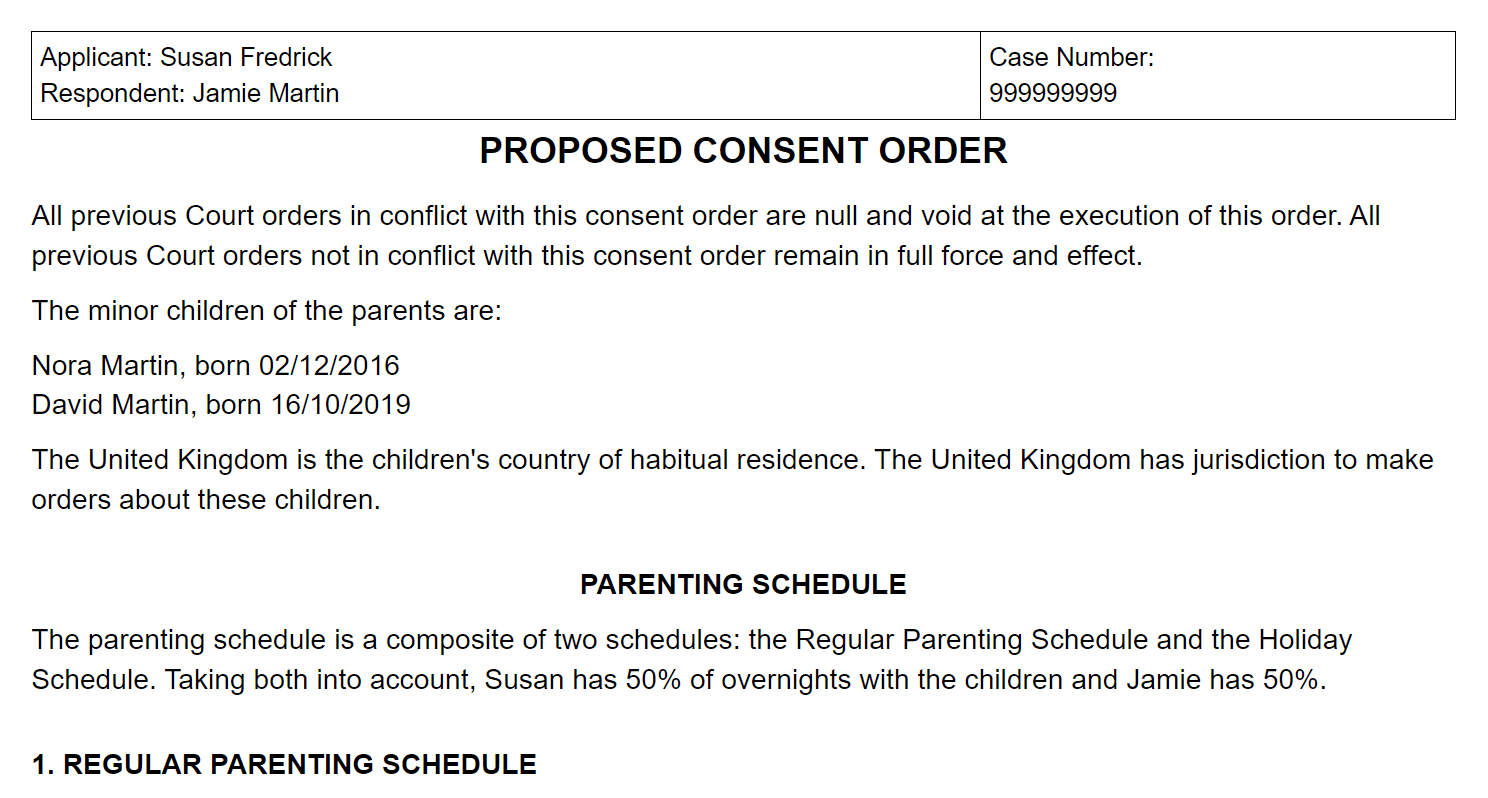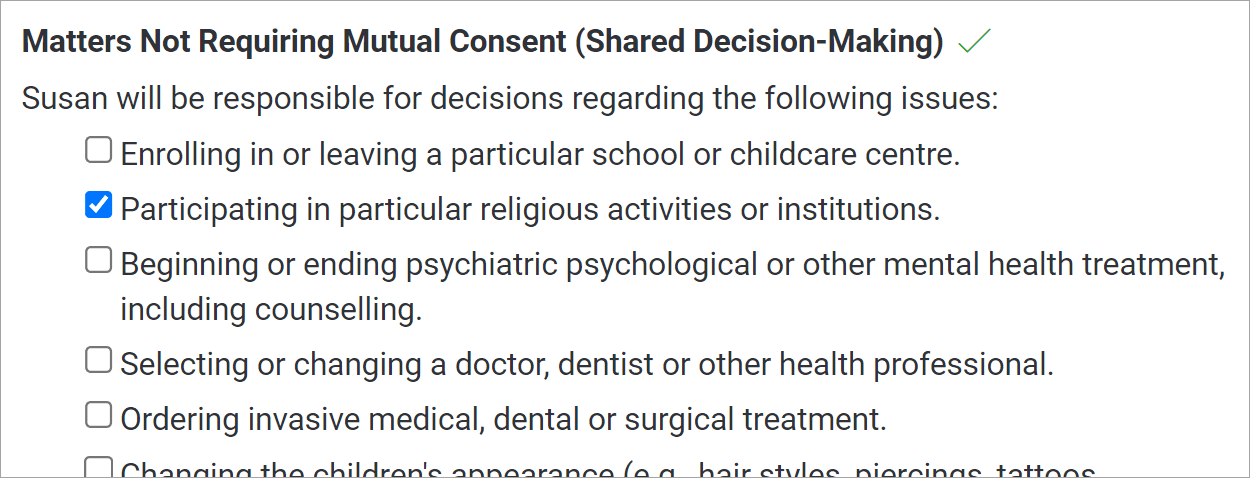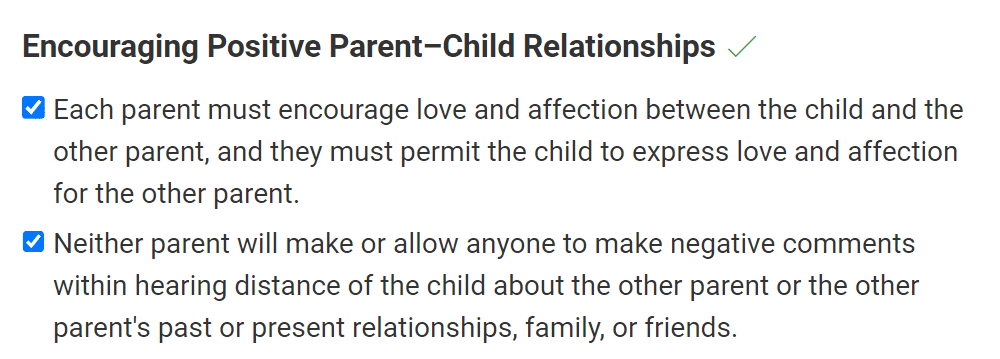
A parenting plan is a written agreement between separated parents (or anyone with parental responsibility) that sets out arrangements for their child. It covers topics like where the child will live and how parents will reach decisions.
Experts urge separated parents to make a plan because it ensures consistency for the child and limits conflict between the parents.
Visualise your schedule. Get a written parenting plan. Calculate your parenting time.

Parents might agree on the contents of their plan on their own, through negotiations with solicitors or through an alternative dispute resolution (ADR) method. No matter the approach you choose, bring a proposed parenting plan with you to resolve issues quickly.
Parents have similar options for putting the plan down on paper. They can do it on their own, or they can have a solicitor or ADR professional draft the document. Many parents use software, such as the Custody X Change parenting plan template, to do it themselves.
Once parents have a plan, they may choose to make it legally binding.
Plans become binding when a judge signs off via a Consent Order or Minute of Agreement. Usually, neither parent has to appear in court.
You may apply for a Consent Order — available in England, Wales and Northern Ireland — with or without a solicitor.
However, for a Minute of Agreement — only available in Scotland — each parent must consult a solicitor, so have one of these legal professionals file for you. They can do this inexpensively if you hand them a court-ready parenting plan.
Whether you file on your own or through a solicitor, you will have to pay a court fee.
As you decide what to include in your plan, consider:
Remember that you can modify your plan as your child gets older and their needs change (as long as both parents agree).
Make your plan as comprehensive as possible, including the following topics at a minimum.
If your child will spend equal time with each parent, state this. Otherwise, name a resident parent (with whom the child will live) and nonresident parent (with whom the child will have contact).
Either way, explain the details in a residence and contact schedule. Aim for as little disruption to your child's existing routine as possible.

As a parent, you have certain decision-making powers for your child, known collectively as parental responsibility. Your plan should state how you'll share this responsibility with the other parent.
Ideally, both parents contribute to the major decisions in their child's life. If you decide to use this shared parenting approach, say so in your plan and define what counts as a 'major decision'.
When shared decision-making is not possible, your plan should state what each parent can decide individually. Give detail to prevent confusion.

If you use the Custody X Change app, it will present you with important decision categories so you can decide how to handle each one.
If you agree on child maintenance arrangements, detail them in your parenting plan. This could be an agreement to have no payment at all.
Child maintenance should be the only financial information in your plan. A parenting plan should not cover how you'll divide your money and assets after separation.
Your plan should detail anything else important to your family. You can add popular parenting provisions about things like health care and travel abroad, as well as create custom rules.
Don't forget that a parenting plan should always protect the best interests of your child. You might need provisions that emphasise this clearly, such as one stating that the child is free to express affection for both parents.

If you cannot agree on a plan even after trying an alternative dispute resolution method, you'll need to ask the court for help. A judge will then issue family court orders that determine your parenting setup.
In addition, the judge may want to see any parenting plans you had in place previously, so always make sure agreements you prepare are thorough and ready for court.
The court processes in England and Wales, Scotland and Northern Ireland differ. Familiarise yourself with your country's practices.
Creating a parenting plan on your own can feel overwhelming. You don't want to leave loopholes or overlook important information.
Use technology to take the guesswork out of the equation. The Custody X Change app walks you through each step of of creating a comprehensive parenting plan.
The result is a professional-quality document that reduces conflict and secures your child's future.
The easiest and most reliable way to make a parenting plan is with Custody X Change.
Visualise your schedule. Get a written parenting plan. Calculate your parenting time.